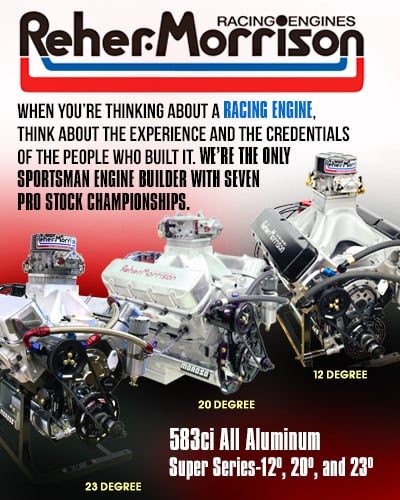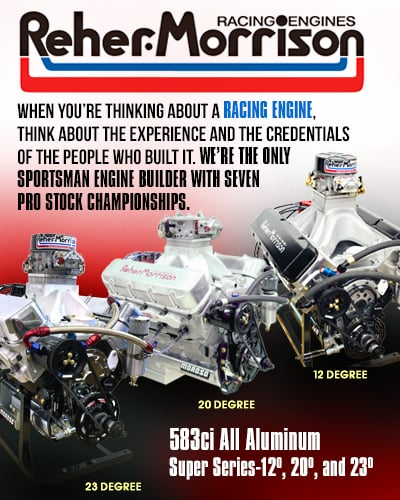LANNY MIGLIZZI'S ART OF BEING ONE WITH THE TRACK

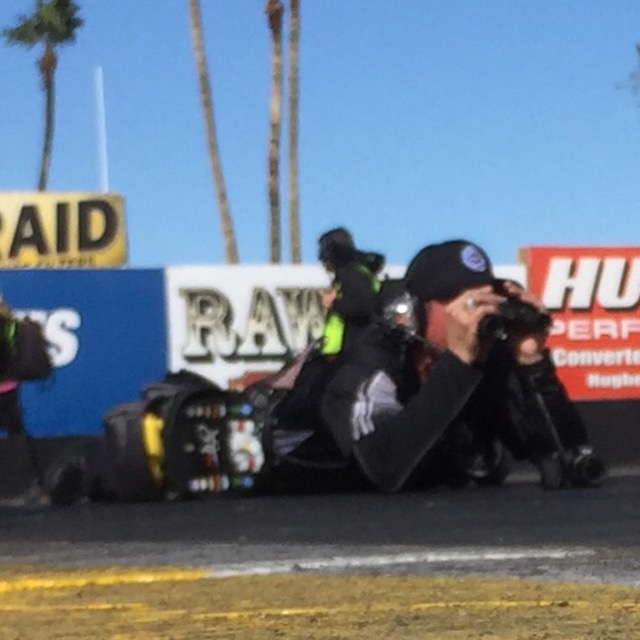
Miglizzi, the official track specialist for John Force Racing, smiled when his method of operation at NHRA Mello Yello Drag Racing brings a stark comparison to Carl, the Groundskeeper in the movie Caddyshack (and played by Billy Murray) and Professor Emmet Brown in Back to the Future (played by Christopher Lloyd).
Somewhere in the middle of these two radical characters can be found an accurate description of Miglizzi.
"That’s fair description," Miglizzi confirmed.
So what exactly does a track specialist do?
If you're Miglizzi, you become one with the racing surface. You inspect every inch of the thousand-foot race course from start to finish and left to right. This inspection includes the traction levels and look for any defects in the concrete or asphalt. Additionally, Miglizzi checks the levelness of the racing surface and notes any discrepancies from start to finish.
After a rough weather start to the NHRA Denso Spark Plug Nationals in Las Vegas, his knowledge of the 1000-foot drag strip located in the shadows of Las Vegas Motor Speedway will be more valuable than ever this weekend.
Miglizzi answers to the crew chiefs who then implement his data into their tuneups, and the decision to tune the car for a gingerly stroll or throw the kitchen sink and anything else they can fit into the next run.
"I’m just a pair of eyes for them up on the line," Miglizzi said. "Just a messenger or scout reporting the news. Each track has their own personality characteristics. If there’s a question about what way it might pull, or if there’s something a little unusual, then we’ll certainly give our opinion.
"I’m just a crew person here like the other guys and girls. Just a pair of eyes for them and can give them a point of view if it’s needed. But, as you know, crew chiefs make all the decisions. And we just try to give our opinion if asked."
And, his opinion is always valuable in the decision-making process whether he acknowledges it or not.
Brian Husen, crewchief of the Monster Energy Top Fuel car driven by Brittany Force, said he depends on Miglizzi when it comes to learning all things track-related.
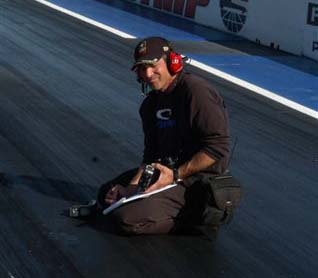 “It’s invaluable for the fact that he goes to the track a day or two before and maps it out, so we know whatever may be an issue with the race track as far as uneven surface or the quality of rubber from one year to the next," Husen explained. "He’s able to track the conditions of the weather vs. the track temperature and what we should expect over time each day. You can go into a day and anticipate what you’re going to run into as far as conditions go. You kind of know in advance, so you can plan your strategy. That’s huge.
“It’s invaluable for the fact that he goes to the track a day or two before and maps it out, so we know whatever may be an issue with the race track as far as uneven surface or the quality of rubber from one year to the next," Husen explained. "He’s able to track the conditions of the weather vs. the track temperature and what we should expect over time each day. You can go into a day and anticipate what you’re going to run into as far as conditions go. You kind of know in advance, so you can plan your strategy. That’s huge.
“All the successful teams either have a track guy or have an alliance with a team that has a track guy. That’s how valuable he is.”
Miglizzi's process has only become success out of his willingness to become one with the track, a track-whisperer or sorts. In his words, this is a practice which requires one to be all-in.
"I’m consumed by it, very passionate about it and I live it 24/7," Miglizzi admitted. "It’s mostly all I do because over 35 years of doing this at kind of the same pace. I think maybe I need to slow down a little because I’m 55, but we learn something new every day. You can learn a lot every day if you just get all in on it."
Nothing is above Miglizzi, even if tasting the rubber from the track gives him a better idea of what the track wants and needs from a race team to successfully navigate start to finish.
"You can touch it, taste it, feel it," Miglizzi said. "Because it was maybe plastic-y, and not pliable and soft. It tells us something."
In the days before the tire rotation machine was developed, Miglizzi used to scrape samples of the rubber and shred it into strips similar to beef jerky to test and analyze for future events.
What in the world would make a very intelligent indidual become a slave to the rubber, concrete and asphalt? For Miglizzi, it was a steadfast process of going the extra mile for his customers.
Before Miglizzi became the man on the 120-degree starting line with a black turtleneck, planking on the starting line with a pair of binoculars staring down track.
"We were a clutch manufacturer," Miglizzi said. "I started mid-1981 with my Dad, Tony at L&T Clutches. If you were a customer, we serviced your clutch, the entire clutch. It was rebuilt, ready to go, back to you. You called me up on a Monday and described how it didn’t work really well during the weekend. And after asking a few questions, I realized… The entire day was summer, blue sky, and from morning to night, they never made a clutch adjustment.
"And that sounded strange because common sense, it’s going to warm up and cool down. I knew I needed to learn more about the race track, and that’s pretty much how it started. Just simply, the clutch needed to be adjusted at some point during the day. I started going out to the tracks."
Miglizzi estimates the family business carried as many as 75 customers, and his track assessments were worth their weight in gold. There were no computers on the cars; just Miglizzi's data and the seat of the pants feel from the driver.
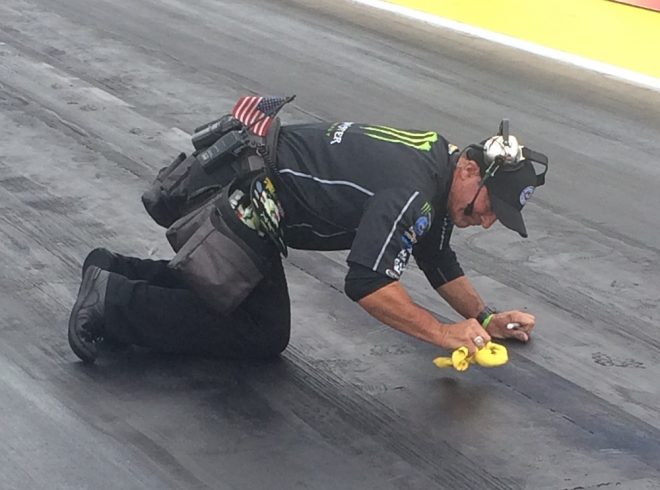 Miglizzi admits the physical toll on his body during those formative years probably still affects him today.
Miglizzi admits the physical toll on his body during those formative years probably still affects him today.
"In the younger days of wearing black turtlenecks and gloves when it was 90-95 degrees in Baton Rouge and 100+ percent humidity, and my body’s probably still affected by that now," Miglizzi admitted. "I know I maybe approach it a little bit differently, but I wanted to create my own pathway, I guess is a way of saying it.
"I remember running from trailer to trailer because the sooner I got there, the quicker I would learn more. And people used to say, ‘Why are you always running? Why don’t you slow down?."
"The sooner I get to that next trailer, the more knowledge I’m going to get."
After all these years learning never gets old for Miglizzi.
"It reminds me of something," Miglizzi said. "I remember a few years of all day long; I was talking to the customer. And at the end of the day, I said, ‘You know, I don’t think I learned very much today. I need to listen more and speak less. Keep my eyes open."
"And so, I think the biggest thing that keeps us going is how much smarter we can get every day, and that’s why there’s so much enthusiasm."


























